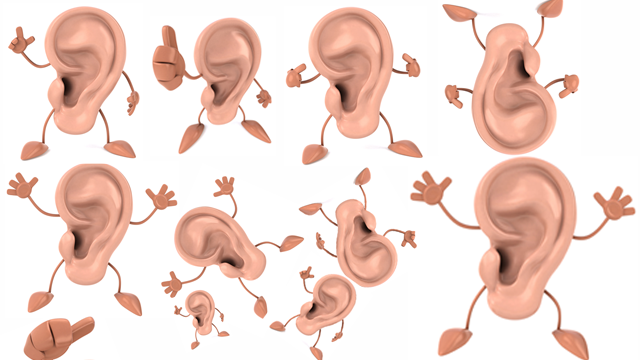Hundreds of millions of people around the globe are affected by hearing loss. We all know someone who has moderate to severe hearing loss. Some of your friends or family members may have been born with challenging hearing, or simply started to lose their hearing as they got older. But that’s not to say that all of them are unable to hear at all. For many of these people, our friends and family members, hearing aids allow them to communicate and live their lives without being affected by the loss of their hearing. Also, hearing aid technology continues to grow, creating more comfortable pieces and smoother sound for users.
When looking for your first hearing aid or browsing options to try something new from what you normally use, it can be overwhelming with the amount of information. When wearing hearing aids, the fit and comfort of your device is just as important as how well it works. Here is a basic breakdown of different kinds of hearing aids.
In the Ear
The full shell is for slight to more severe hearing losses. This aid is chosen when more power is required, which can’t be provided by a smaller sized shell.
In the Canal
This half shell fills only the bottom half of the external ear and is less visible than a full one. These aids are for light to moderate hearing losses. This aid is one of the more popular ones because of it’s more natural and comfortable fit.
Open – Receiver in Canal
This aid does not stand out as much as some of the others available. The sound has been argued to be smoother with less distortion than other aids. Also, this aid is suited for an open fit technology. This means they can be fitted without plugging up the ear, offering relief from occlusion.
Completely in the Canal
This aid is very small and fits completely in the ear (note the name). This aid is not visible unless you were to look directly in the ear. The size can lead to limitations for directional microphones, venting size and battery life. Discuss this option with your Audiologist to see if it’s a right fit.
Invisible in the Canal
This is a more recent addition to custom hearing aids. It requires a bit of work/training with a Audiologist to get the sound right. This device is for slight to moderate hearing loss and has to fit the ear canal. It’s not overly common for this aid not to fit the canal.
Hopefully these short break downs of hearing aids helped with getting an idea of what you want for yourself. Whether you have further questions or not, make sure you discuss your options with your Audiologist. It is advised to familiarize yourself with what’s available, but always get a professional opinion on your hearing aid choice as well.

Leave a Reply